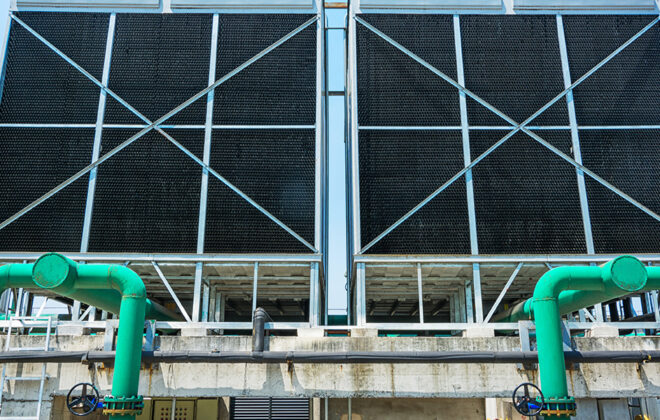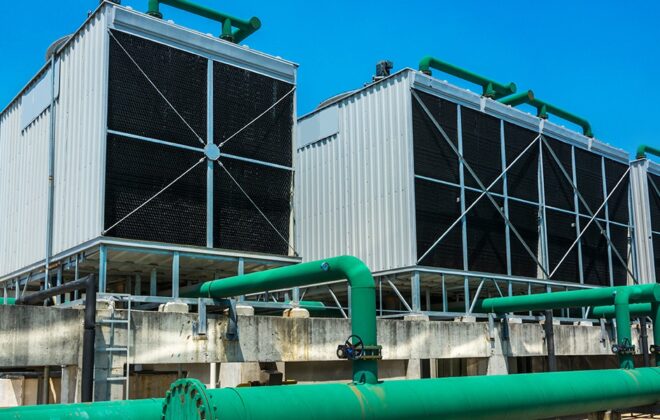Commercial Kitchen Ventilation Systems: A Complete Guide for Restaurants
Commercial kitchens, where culinary innovation meets the demands of high-volume service, one crucial aspect often receives less attention that is ventilation. This is where kitchen ventilation systems come into play. These air quality control equipments play a crucial role in maintaining a safe, comfortable, and efficient environment within the commercial kitchen. Let’s unveil the pivotal role of kitchen ventilation systems in commercial settings and the benefits they bring to businesses.
The Importance of Using Kitchen Ventilation Systems
Kitchen ventilation systems, also known as kitchen exhaust systems or hoods, are integral components in commercial and residential kitchens designed to remove and filter airborne contaminants generated during cooking processes. Kitchen ventilation systems are the silent sentinels that ensure the show goes on. These systems are indispensable for your business as they prioritize safety by reducing fire hazards, maintain healthier indoor air quality for your staff, ensure compliance with regulations, promote energy efficiency, and enhance the overall customer dining experience. Investing in a quality kitchen ventilation system has become a necessity to safeguard your business’s success and reputation in the culinary industry.
What Does a Kitchen Ventilation System Do?
So, what exactly does a kitchen ventilation system do to make kitchens work well? Let’s delve into the benefits of using a kitchen ventilation system in maintaining proper air quality.
- Removes Airborne Contaminants: Kitchen ventilation systems employ hoods and filters to capture and remove airborne contaminants such as grease particles, smoke, and cooking odors. This action keeps the kitchen air clean and fresh, ensuring a pleasant environment for both staff and customers.
- Reduces Fire Hazards: Swiftly eliminating grease-laden air is critical for fire prevention. The effective removal of these contaminants significantly reduces the risk of kitchen fires, safeguarding the kitchen and preventing potentially disastrous incidents that could hinder the business operations.
- Improves Air Quality: Proper ventilation systems enhance indoor air quality by continuously replacing stale air with fresh outdoor air. This improvement creates a healthier and more comfortable work environment for the staff, allowing them to breathe easily, work efficiently, and stay energized.
- Enhances Comfort: High temperatures and humidity can make kitchen workspaces uncomfortable. Kitchen ventilation systems help maintain a comfortable temperature and humidity level, alleviating the discomfort of chefs and staff working tirelessly to prepare culinary delights.
- Prevents Grease Buildup: Efficient grease filters and exhaust systems are integral components of kitchen ventilation. They prevent the accumulation of flammable grease on surfaces, reducing the need for extensive and frequent cleaning efforts and minimizing fire risks.
- Maintains Equipment Performance: Overheating can lead to premature wear and tear of kitchen equipment. Proper ventilation mitigates this by dissipating excess heat, ensuring that your equipment operates efficiently and lasts longer.
- Complies with Regulations: Compliance with health and safety regulations is essential for any kitchen establishment. A well-designed and adequately maintained kitchen ventilation system ensures that your business meets all necessary codes and standards, avoiding potential fines and legal issues.
- Reduces Energy Costs: Many modern kitchen ventilation systems incorporate energy-efficient features, such as variable-speed fans and heat recovery systems. These features not only contribute to a cleaner environment but also result in cost savings on energy bills, making them a sustainable and economically prudent choice for your business.

Where Are Kitchen Ventilation Systems Essential?
The need for kitchen exhaust systems extends across various commercial establishments, each with its unique offerings. These include:
- Restaurants and Cafes: From cozy cafes to upscale dining establishments, effective ventilation ensures a pleasant dining experience and a safe kitchen environment.
- Hotels and Hospitality Industry: Large-scale hotels and catering services rely on kitchen ventilation to maintain the quality of their culinary offerings and ensure guest satisfaction.
- Hospitals and Healthcare Facilities: Clean, hygienic kitchens are paramount in healthcare settings, where patient well-being depends on safe and nutritious meals.
- Schools and Universities: Educational institutions with cafeterias require proper ventilation to provide students and staff with healthy meals and a comfortable environment.
- Catering Services and Event Venues: Venues that host events and cater to large crowds must have robust ventilation systems to meet diverse culinary demands.
The type and size of your kitchen operation will influence the specific ventilation needs of your establishment.
Components of a Comprehensive Kitchen Exhaust System
A well-designed kitchen exhaust system comprises several key components that work in harmony to create a safe and efficient kitchen environment:
- Exhaust Hoods and Canopies: These are strategically placed over cooking equipment to capture airborne contaminants at the source.
- Filtering Systems: Grease and odor filters are essential components that trap particles, ensuring the purity of the exhausted air.
- Fans and Ductwork: Fans are responsible for drawing contaminated air through the system, while ductwork carries it outside.
- Makeup Air Systems: These systems balance airflow by introducing fresh air into the kitchen, maintaining a comfortable environment.
Each component plays a vital role in the overall functionality of the system, ensuring the safety and well-being of your kitchen staff.
How to Select a Right Kitchen Exhaust System?
Selecting the right kitchen exhaust system is essential for the safety, functionality, and compliance of your kitchen. Consider the following points before choosing a right exhaust system for your kitchen:
- Assess Your Kitchen Needs: Begin by evaluating your kitchen’s size, layout, and the types of cooking equipment you use. Consider the volume of cooking, the heat produced, and the types of contaminants generated during cooking.
- Determine Airflow Requirements: Calculate the required airflow rate for your kitchen. It should be sufficient to capture and remove airborne contaminants effectively. The CFM (cubic feet per minute) rating should match your kitchen’s size and cooking equipment.
- Choose the Right Hood Type: Select the appropriate hood design based on your kitchen setup, such as wall-mounted hoods, island hoods, or canopy hoods. Ensure it aligns with your cooking equipment and layout.
- Consider Ductwork: Plan the layout of the exhaust ductwork carefully. Straight, smooth ducts with minimal bends and obstructions ensure efficient airflow and reduce maintenance issues.
- Noise Level: Consider the noise generated by the exhaust system. Noisy fans can disrupt the kitchen’s working environment. Look for quieter options to maintain a comfortable workspace.

Ventilation for commercial kitchens is an important feature to look for, and kitchen ventilation systems emerge as indispensable partners in the high-pressure world of commercial kitchens, where precision, creativity, and safety meet. They not only ensure compliance with regulations but also contribute to a safer, healthier, and more productive workspace. The impact of effective ventilation systems extends beyond the kitchen, positively influencing your bottom line and your reputation.
Elevate your commercial kitchen to new heights with Symbiosis Blowerfab, a trusted and reliable manufacturer of air pollution control equipment. Our kitchen ventilation solutions are designed to meet the unique needs of your business. Contact the most trusted commercial kitchen ventilation and exhaust system manufacturer in India today for a consultation and explore how our expertise can transform your kitchen into a safer, more efficient, and more profitable space.
Related Posts
Recent Posts
- How Industrial Fans Transform Ventilation Systems in Smart Factories
- How Centrifugal Blowers Help Optimize HVAC Systems in Large Facilities
- How Industrial Blowers Improve Air Quality and Safety in Factories
- How to Improve Cement Plant Performance with High-Efficiency Blowers and Fans
- SYMBIOSIS Blowerfab Delivers State-of-the-Art RC Fans to ArcelorMittal Nippon Steel India, Enhancing Industrial Efficiency




